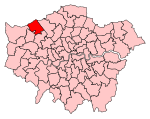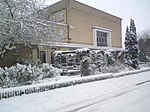Avanti House Secondary School
2012 establishments in EnglandAC with 0 elementsEducational institutions established in 2012Free Schools in England with a Formal Faith DesignationFree schools in London ... and 5 more
Hindu schools in the United KingdomLondon school stubsSchools affiliated with the International Society for Krishna ConsciousnessSecondary schools in the London Borough of HarrowUse British English from November 2020
Avanti House Secondary School is coeducational secondary school and sixth form located in the Stanmore area of the London Borough of Harrow, England.It is a Hindu faith free school that was established in 2012, and is part of the Avanti Schools Trust.Avanti House Secondary School offers GCSEs as programmes of study for pupils, while students in the sixth form have the option to study from a range of A Levels. The school also offers courses studying Sanskrit.
Excerpt from the Wikipedia article Avanti House Secondary School (License: CC BY-SA 3.0, Authors).Avanti House Secondary School
Wemborough Road, London Stanmore (London Borough of Harrow)
Geographical coordinates (GPS) Address Phone number Website Nearby Places Show on map
Geographical coordinates (GPS)
| Latitude | Longitude |
|---|---|
| N 51.60845 ° | E -0.30379 ° |
Address
Whitchurch Primary School & Nursery (Whitchurch First School & Nursery)
Wemborough Road
HA7 2EQ London, Stanmore (London Borough of Harrow)
England, United Kingdom
Open on Google Maps








